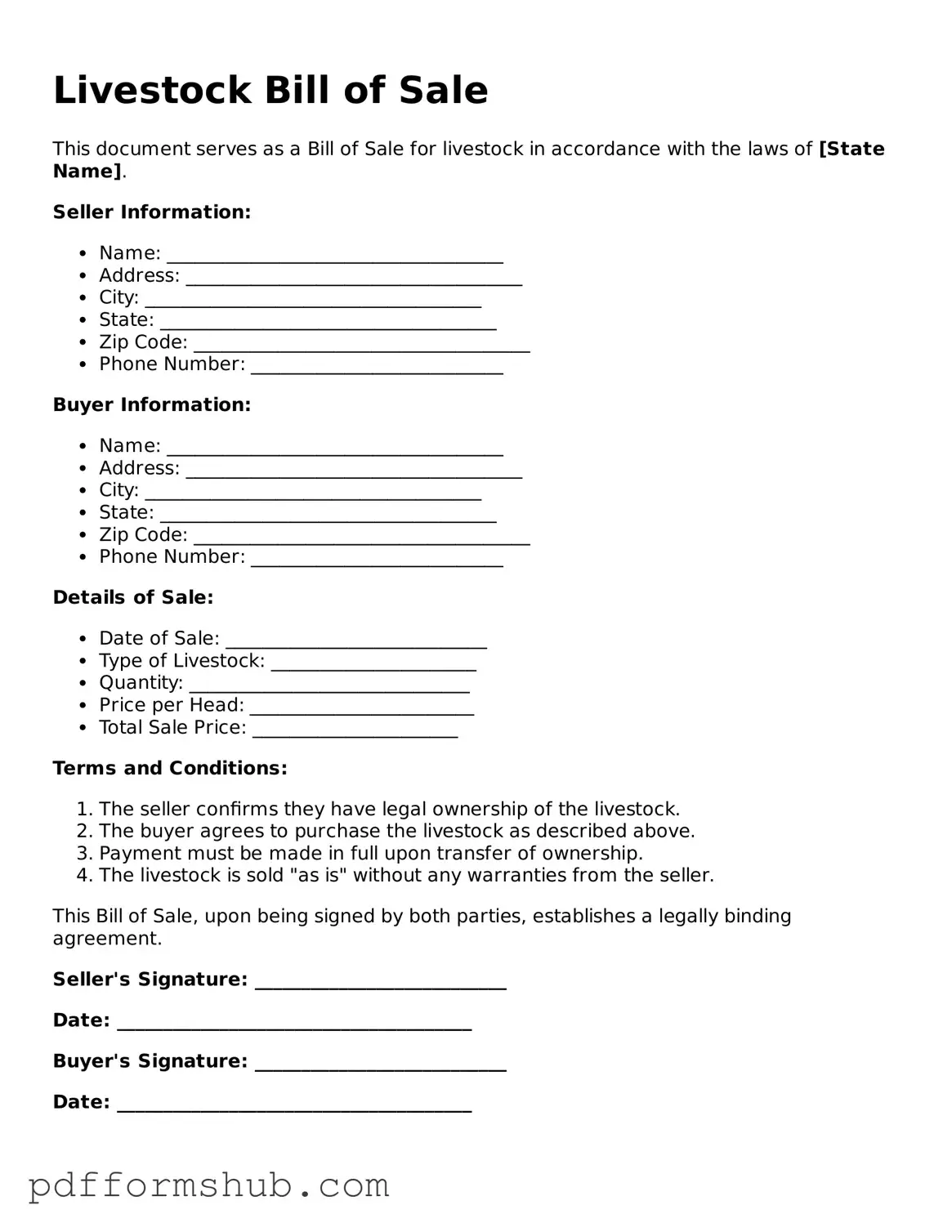When engaging in the buying or selling of livestock, a Livestock Bill of Sale form serves as an essential document that formalizes the transaction between parties. This form typically includes crucial details such as the names and addresses of both the seller and the buyer, ensuring that all parties are clearly identified. Additionally, it outlines a comprehensive description of the livestock being sold, including breed, age, and any identifying marks or tags. Payment terms are also specified, detailing the purchase price and any conditions related to payment methods or timelines. Furthermore, the form often includes a statement regarding the health and ownership status of the animals, providing assurance to the buyer about the livestock's condition and legal standing. By capturing these key elements, the Livestock Bill of Sale not only facilitates a smooth transfer of ownership but also serves as a legal safeguard for both the buyer and seller, fostering transparency and trust in the agricultural marketplace.
